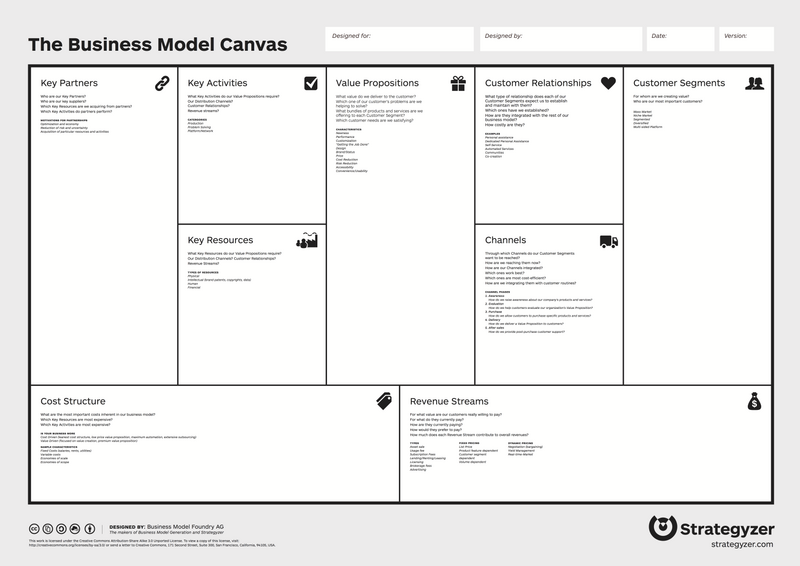Business Model Canvas

Understanding the Business Model Canvas
The Business Model Canvas (BMC) is a strategic management tool that provides a visual framework for developing, describing, and analyzing business models. Created by Alexander Osterwalder, it simplifies the complexities of business planning into a single-page format that outlines the essential components of any business. This approach allows entrepreneurs and managers to visualize their business model effectively, facilitating discussions and strategic planning.
The Nine Building Blocks of the Business Model Canvas
The BMC is divided into nine key components, each representing a fundamental aspect of a business:
- Customer Segments: Identifies the different groups of people or organizations that a business aims to reach and serve. Understanding customer segments helps tailor products and services to meet specific needs.
- Value Propositions: Describes the unique value that a business offers to its customers, differentiating it from competitors. This could include innovative features, quality, price, or customer service.
- Channels: Outlines how a company delivers its value proposition to its customer segments. This includes various communication, distribution, and sales channels.
- Customer Relationships: Explains how a business interacts with its customers. This can range from personal assistance to automated services, depending on the nature of the relationship desired.
- Revenue Streams: Details how a business generates income from its customer segments. This could involve direct sales, subscription fees, leasing, or other revenue-generating activities.
- Key Resources: Lists the most important assets required to make the business model work. These can be physical, intellectual, human, or financial resources.
- Key Activities: Describes the critical actions a company must take to operate successfully and deliver its value proposition.
- Key Partnerships: Identifies the external companies or suppliers that help the business achieve its objectives. Partnerships can enhance efficiency and reduce risk.
- Cost Structure: Outlines all costs incurred to operate the business model. Understanding costs helps in pricing strategies and financial planning.
Benefits of Using the Business Model Canvas
The BMC offers several advantages for businesses:
- Simplicity and Clarity: Unlike traditional business plans that can be lengthy and complex, the BMC provides a concise overview that is easy to understand and communicate within teams and with stakeholders.
- Holistic View: It encourages businesses to look at all aspects of their operations collectively rather than in isolation, promoting a comprehensive understanding of how different elements interact.
- Flexibility: The canvas can be easily modified as businesses evolve or pivot in response to market changes or new insights.
- Facilitates Collaboration: By using the BMC in team settings, businesses can foster collaborative discussions that lead to innovative ideas and solutions.
How to Create Your Business Model Canvas
Creating a Business Model Canvas involves several steps:
- Gather Your Team: Collaborate with diverse team members to ensure all perspectives are represented.
- Define Your Purpose: Clarify what you want to achieve with your canvas—are you refining an existing model or exploring new opportunities?
- Draw the Canvas: Use a large sheet or digital tool to outline the nine building blocks.
- Fill in Each Block: Work together to populate each section with relevant information about your business.
- Analyze Relationships: Examine how different components affect one another and identify any gaps or areas for improvement.
- Iterate and Finalize: Revise your canvas based on feedback and finalize it as a reference for strategic decisions moving forward.
Conclusion
The Business Model Canvas is an invaluable tool for entrepreneurs and established businesses alike. By providing a structured yet flexible approach to visualizing business models, it empowers organizations to innovate, adapt, and thrive in competitive environments. Whether you're launching a startup or optimizing an existing enterprise, utilizing the BMC can streamline your strategic planning process and enhance your understanding of what drives your business's success.
